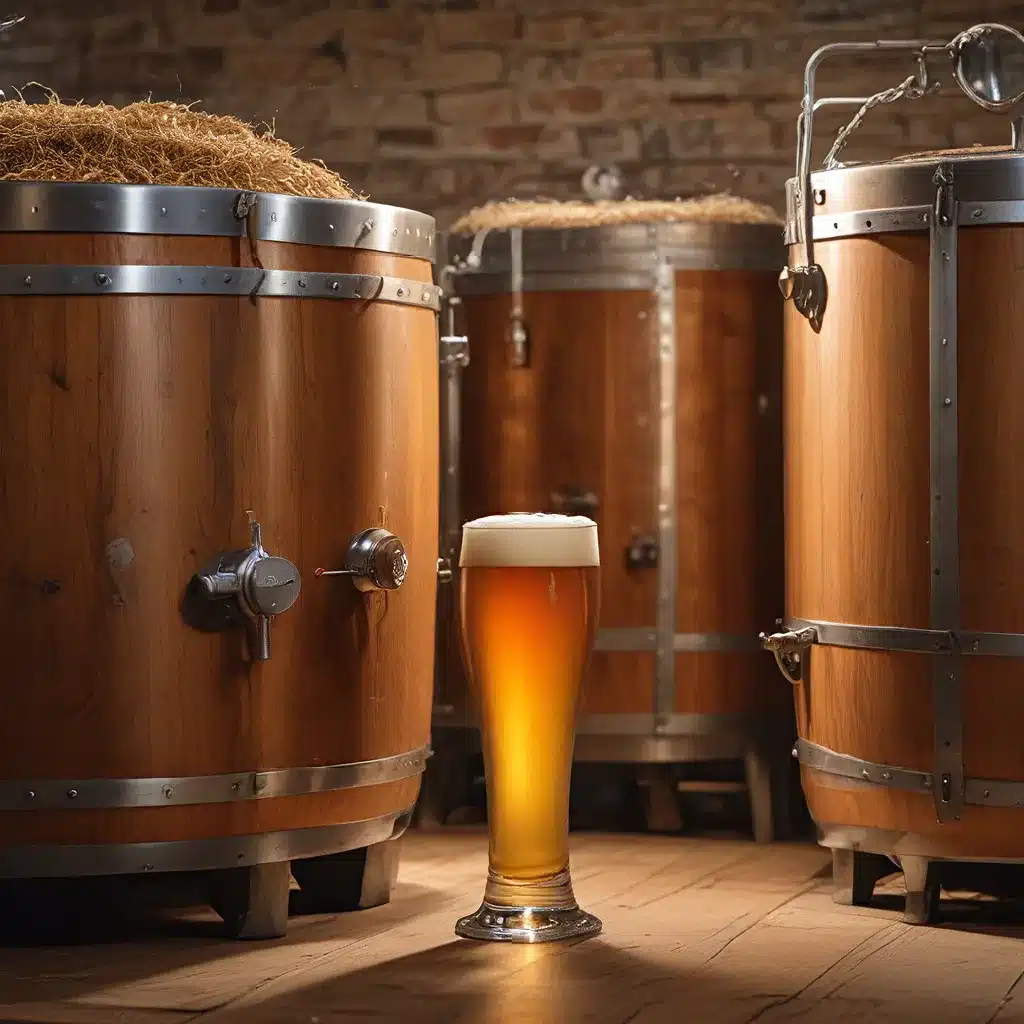
Ah, the humble lager – that crisp, refreshing elixir that has captivated beer enthusiasts worldwide. But make no mistake, mastering the art of lager brewing is no easy feat. It requires a deep understanding of the nuances within different styles and a commitment to meticulous brewing techniques. Today, my friends, we’re going to embark on a journey to unravel the secrets behind crafting the perfect lager at home.
Distinguishing North American and Continental Lagers
Now, you might be wondering, “Wait, aren’t all lagers the same?” Well, my thirsty comrades, that’s where you’d be mistaken. You see, we can broadly categorize lagers into two main groups: North American and Continental.
North American lagers, such as the ubiquitous Light Lager, Premium Lager, and Mexican Lager, are characterized by their minimal ester profiles and dry finishes. These are the beers you’ll typically find at your local watering hole, quenching the thirst of the masses.
On the other hand, Continental lagers like the Munich Helles, Czech Pilsner, and Dunkel offer a more complex flavor profile, with rich malt-driven tones and moderate ester profiles. These are the beers that make the beer nerds among us swoon with delight.
Escarpment Labs has a clever way of categorizing these two groups, and I find it quite useful for understanding the nuances involved in brewing them.
Mastering the Fundamentals of Lager Brewing
Regardless of the specific style, there are several key principles that remain constant when brewing crisp, delicious lagers. Let’s dive into these shall we?
Yeast Nutrition
Ensuring proper nutrition for your yeast cells is crucial to avoiding those pesky off-flavors like acetaldehyde, sulfur, fusels, and diacetyl. These buggers can wreak havoc on your carefully crafted beer, so you’ll want to make sure your yeast is well-fed and happy.
Pitching the Right Amount of Yeast
Pitching a sufficient amount of yeast promotes a clean and healthy fermentation process. Underpitching can lead to all sorts of problems, from sluggish fermentation to unsavory off-flavors. And nobody wants a sad, underachieving lager, am I right?
Cold Fermentation and Conditioning
Ah, the magic of temperature control. Fermenting and conditioning lagers at those chilly lager temperatures (around 45-55°F) slows down flavor production and allows for a smoother, more refined finish. It’s like putting your beer in the fridge for an extended stay, but without the risk of it getting frostbite.
Brewing Techniques for North American vs. Continental Lagers
Now that we’ve covered the fundamental principles, let’s dive a little deeper into the specific approaches for North American and Continental lagers.
North American Lagers
For those North American lagers, the focus is on minimal ester profiles and dry finishes. This means paying close attention to your fermentation temperature, yeast strain, and mash profile to ensure you’re not introducing any unwanted fruity or estery flavors.
Escarpment Labs explains that these lagers are often fermented at slightly warmer temperatures, which can produce more issues. However, they then undergo a conditioning phase at warmer temperatures, allowing the yeast to re-uptake any off-flavors.
Continental Lagers
When it comes to Continental lagers, the name of the game is rich malt flavors and moderate ester profiles. These beers require a different approach, with an emphasis on preventing the creation of off-flavors in the first place, rather than relying on a cleanup phase.
Decoction mashing, extended boils, and multiple temperature rests are all techniques that can contribute to the development of those coveted malt-driven flavors and a smooth, balanced finish. But, as Escarpment Labs points out, these methods may not be necessary for every brewer or style.
Embracing Experimentation and Attention to Detail
Brewing crisp, delectable lagers is both an art and a science, my friends. It requires a deep understanding of the nuances between styles, a willingness to experiment, and a relentless attention to detail.
Whether you’re crafting a classic North American lager or exploring the depths of Continental styles, remember to embrace the journey. Treat your yeast with care, keep those temperatures in check, and never forget that the devil is in the details. After all, great beer is all about the little things, isn’t it?
And speaking of great beer, have you checked out the selection at The Up and Under Pub? They’ve got an impressive lineup of lagers that’ll make your taste buds dance with delight. Maybe you’ll even find some inspiration for your next homebrew adventure.
Conclusion: Unlocking the Secrets, One Sip at a Time
So, there you have it, folks – the secrets to unlocking the magic of lager brewing at home. It may not be the easiest path, but the rewards are oh-so-worth it. Imagine the look on your friends’ faces when you pour them a perfectly crisp, refreshing lager that you brewed yourself. Priceless, right?
Remember, the journey to brewing lager perfection is a marathon, not a sprint. But with the right knowledge, a little patience, and a whole lot of passion, you’ll be sipping on your very own homemade lager in no time. Cheers, my fellow beer enthusiasts, and happy brewing!

